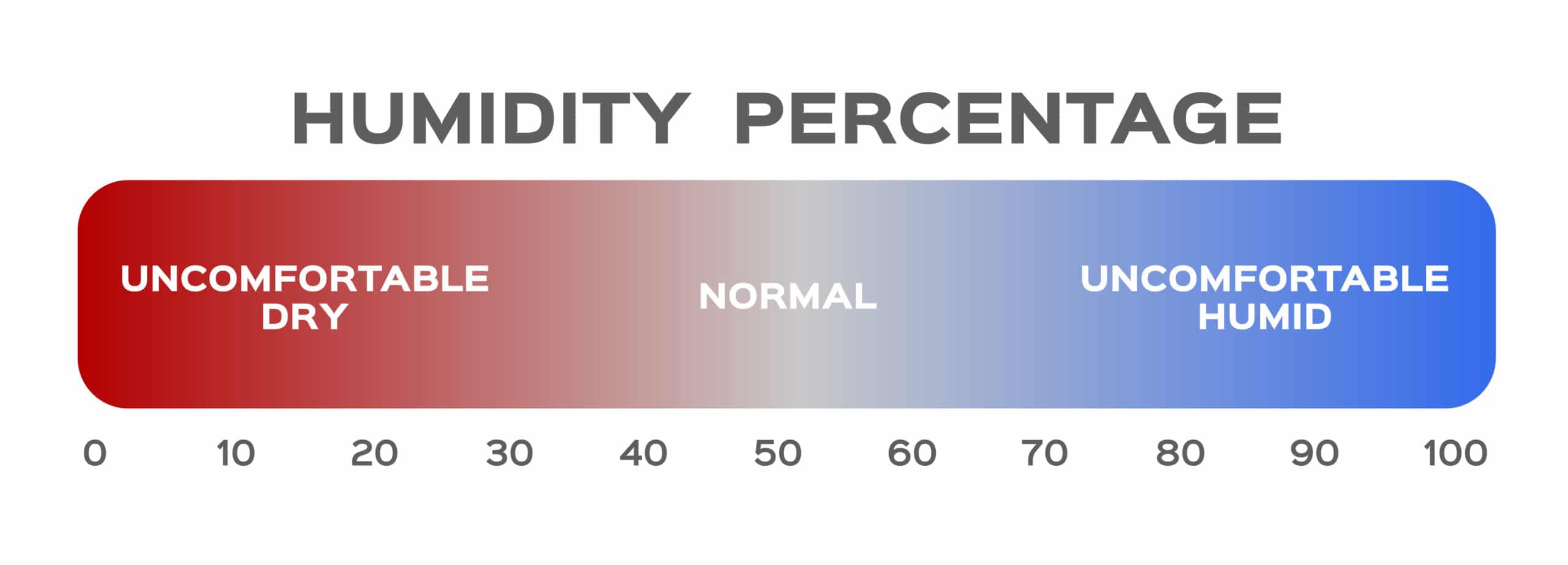In the winter months, dry indoor air can cause several problems for your home and health. From warped hardwood floors to flu-like allergies, you compromise more than just your comfort. That said, you must increase your home's humidity level, especially around the coldest months of the year.
Maintaining an indoor temperature of about 18 to 21°C in winter is recommended, with the best humidity level ranging between 30 and 40%.
Keep in mind that maintaining healthy indoor humidity levels in the winter has nothing but positive effects. To make it easier for you, you can opt to set a humidifier to a specific humidity percentage.
What Should the Right Indoor Humidity Be in Winter?
The ideal relative humidity level in the winter months generally ranges between 30 and 40%. It is difficult to pinpoint one number as the correct answer, but this will heavily depend on your home's indoor and outside temperature.

And if you set the humidity levels a bit too high (more than 60 percent), you may only put your home at an increased risk of mold infection. If it is set too low (below 30%), the air will be too dry. You must adjust the humidity levels indoors in the wintertime to avoid condensation on your windows. When overlooked, this may damage your home and cost you expensive repairs. (Related: The Ideal Indoor Humidity To Keep You Comfortable At Home)
What is Relative Humidity?
At this point, it would be best to understand what relative humidity is. It refers to the amount of water vapor present in the air, which is about the total water vapor amount the air can hold at a given time.
Suppose you had a recent reading of 100% relative humidity. In that case, your indoor air is totally saturated with water vapor. It cannot hold any further moisture at such a temperature. Other telling signs of an excessive humidity level are visible condensation on the windows. An uncontrolled relative humidity at your home may just place your family in potentially dangerous situations.
Ideal Humidity Levels in the Winter
Indoor humidity drops between 25 and 35 percent in the winter months. It will be challenging to keep the humidity levels higher due to the cold weather condition. The real challenge lies in keeping the humidity low so condensation doesn’t form indoors.
It would be best to keep the cold, dry air outside your home, as this will cause discomfort, illnesses (flu and allergies), and high heating bills. You may want to use a humidifier to control your indoor humidity levels better with dry indoor air.
How to Increase Humidity Indoors in the Winter
Using a humidifier to add more moisture to the air is the easiest way to control indoor humidity levels. But there are other options you may consider. Here are some other ways to add moisture to your dry indoor air in the winter:
Balancing the Humidity Levels during the Winter Months
In the winter, it’s only standard for the indoor air quality to be much drier. The fire in the furnace tends to dry out the air as it burns the water vapor. Hence, many homeowners use a furnace humidifier to prevent the indoor air from becoming too dry.
Indoor air that’s too dry can cause your wood to shrink and crack. Not to mention, it may cause several health issues for you and your family. So when condensation forms, take it as a sign your indoor humidity level may be set too high.
Other Common Problems with High Humidity Levels in Winter
Besides wood root and mold growth, high humidity levels may cause the following:
It would be best if you got your humidity levels right in the wintertime. It shouldn’t be set too much, nor too little.
Other Factors Affecting Humidity Levels in Winter
No two homes are the same. Several factors may impact your indoor humidity levels in the winter. Aside from ventilation and the humidifier setting, here are other things to keep an eye on:
Ultimately, people have different comfort levels and personal preferences. A humidity level between 30 and 40 is an excellent baseline to ensure comfort in the winter. Still, you may need to adjust temperatures and your humidifier setting to find what suits you best. Once you figure this out, the winter months will be more comfortable than ever!
Frequently Asked Questions
How do I know what my humidity level is?
A hygrometer is the best tool to determine the humidity level in your home. It is a device used to measure the amount of water vapor in the air. These vary in price from $10 and up at your local hardware shop.
What are the dangers of high humidity levels?
Too much moisture is a bad thing when the outside temperature decreases. Condensation on the windows might gradually bead up and roll down until it soaks into the window frame if the humidity level becomes too much. This water can leak back behind the wall below the window over the winter, causing wood rot and mold. Mold is not only a health hazard for your family, but the damage which excess water in the air could do behind your walls can be pricey.
How do I reduce the humidity in my house?
When you see condensation on your windows, consider lowering the humidity level in your humidifier. This should resolve the problem, and you should notice results in a short time. If it doesn't, have an HVAC professional inspect your whole-house humidifier. There are several alternative options for restoring low humidity levels in your house during the cold winter months:
Remember that humid air feels warmer than dry air, so if you do your share to maintain your home's humidity with cooler indoor temperatures, you won't need as much aid from your heater.
